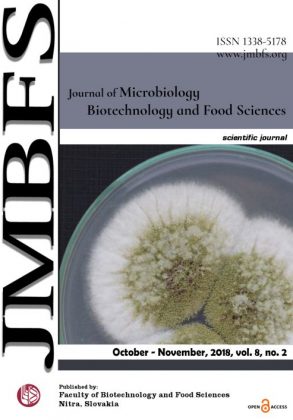EFFECT OF DIFFERENT CULTURE MEDIUM ON CULTIVATION OF ADIPOSE TISSUE DERIVED STEM CELLS FROM TWO BIOLOGICAL SOURCES
DOI:
https://doi.org/10.15414/jmbfs.2018.8.2.798-801Keywords:
rabbit, adipose-derived stem cells, flow cytometryAbstract
Aim of this study was to optimize the methodology of isolation and cultivation of rabbit adipose derived stem cells. Visceral fat and subcutaneous fat from interscapular region of the New Zealand White Line rabbit were used for experiments. Stem cells were cultured in αMEM and DMEM medium supplemented with 20% FBS and 1% antibiotics. We created 4 experimental groups based on source of fat tissue and cultivation medium: Interscapular_αMEM, Interscapular_DMEM, Visceral_αMEM, Visceral_DMEM. Using flow cytometry we analyzed viability of stem cells and intracellular and surface markers: vimentin, desmin, αSMA, CD29, CD34, CD44 and CD45. Morphology analyses revealed typical fibroblastic-like spindle shape cells in all cultured groups after few days of culture. Results of our study confirmed positive expression of CD29 and CD44 in all experimental groups thereby we confirmed that adipose derived stem cells have mesenchymal origin. Cells also showed positive expression of intracellular markers. Typical hematopoietic markers CD34 and CD45 were not expressed. Statistical analysis did not show significant differences between individual experimental groups, but based on tendency to fasten cell growth (recorded by regular observation and population doubling time analysis), we selected Interscapular_αMEM as a group for further experiments.Downloads
Download data is not yet available.
Downloads
Published
2018-10-01
How to Cite
Tomková, M., KulÃková, B., VaÅ¡ÃÄek, J., Baláži, A., MakareviÄ, A., & Chrenek, P. (2018). EFFECT OF DIFFERENT CULTURE MEDIUM ON CULTIVATION OF ADIPOSE TISSUE DERIVED STEM CELLS FROM TWO BIOLOGICAL SOURCES. Journal of Microbiology, Biotechnology and Food Sciences, 8(2), 798–801. https://doi.org/10.15414/jmbfs.2018.8.2.798-801
Issue
Section
Biotechnology
License
Copyright (c) 2018 Mária Tomková, Barbora KulÃková, JaromÃÂr VaÅ¡ÃÄek, Andrej Baláži, Alexander MakareviÄ, Peter Chrenek

This work is licensed under a Creative Commons Attribution 4.0 International License.
All papers published in the Journal of Microbiology, Biotechnology and Food Sciences are published under a CC-BY licence (CC-BY 4.0). Published materials can be shared (copy and redistribute the material in any medium or format) and adapted (remix, transform, and build upon the material for any purpose, even commercially) with specifying the author(s).





